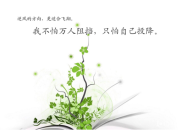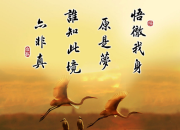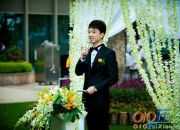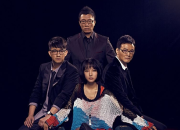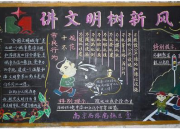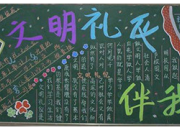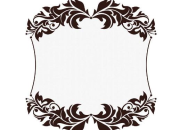英文导游词幽默(4)
时间:2021-08-31英文导游词幽默7
Lying at the center of Beijing, the Forbidden City, called Gu Gong, in Chinese, was the imperial palace during the Ming and Qing dynasties. Now known as the Palace Museum, it is to the north of Tiananmen Square. Rectangular in shape, it is the world‘s largest palace complex and covers 74 hectares. Surrounded by a six meter deep moat and a ten meter high wall are 9,999 buildings. The wall has a gate on each side. Opposite the Tiananmen Gate, to the north is the Gate of Devine Might (Shenwumen), which faces Jingshan Park. The distance between these two gates is 960 meters, while the distance between the gates in the east and west walls is 750 meters. There are unique and delicately structured towers on each of the four corners of the curtain wall. These afford views over both the palace and the city outside. The Forbidden City is divided into two parts. The southern section, or the Outer Court was where the emperor exercised his supreme power over the nation. The northern section, or the Inner Court was where he lived with his royal family. Until 1924 when the last emperor of China was driven from the Inner Court, fourteen emperors of the Ming dynasty and ten emperors of the Qing dynasty had reigned here. Having been the imperial palace for some five centuries, it houses numerous rare treasures and curiosities. Listed by UNESCO as a World Cultural Heritage Site in 1987, the Palace Museum is now one of the most popular tourist attractions world wide.
Construction of the palace complex began in 1407, the 5th year of the Yongle reign of the third emperor of the Ming dynasty. It was completed fourteen years later in 1420. It was said that a million workers including one hundred thousand artisans were driven into the long-term hard labor. Stone needed was quarried from Fangshan, a suburb of Beijing. It was said a well was dug every fifty meters along the road in order to pour water onto the road in winter to slide huge stones on ice into the city. Huge amounts of timber and other materials were freighted from faraway provinces. Ancient Chinese people displayed their very considerable skills in building the Forbidden City. Take the grand red city wall for example. It has an 8.6 meters wide base reducing to 6.66 meters wide at the top. The angular shape of the wall totally frustrates attempts to climb it. The bricks were made from white lime and glutinous rice while the cement is made from glutinous rice and egg whites. These incredible materials make the wall extraordinarily strong.
Since yellow is the symbol of the royal family, it is the dominant color in the Forbidden City. Roofs are built with yellow glazed tiles; decorations in the palace are painted yellow; even the bricks on the ground are made yellow by a special process. However, there is one exception. Wenyuange, the royal library, has a black roof. The reason is that it was believed black represented water then and could extinguish fire.
Nowadays, the Forbidden City, or the Palace Museum is open to tourists from home and abroad. Splendid painted decoration on these royal architectural wonders, the grand and deluxe halls, with their surprisingly magnificent treasures will certainly satisfy "modern civilians".
英文导游词幽默8
hua shan is the highest of china’s five sacred mountains. it is 120 kilometers east of xian. it has five peaks that resemble the petals of a flower. the highest peak is 2180 meters (7085 feet).
we had had discussions about going to hua shan with some graduate students from computer science. that didn’t work out due to changes in schedules on both sides. also, they were planning to do the climb at night to be able to reach the peak at sunrise. that did not appeal to us. we wanted to spend a night on the mountain. fran’s department arranged a trip for us, making reservations at the simple hotel on the north peak. they sent two graduate students to accompany us, though they had not been to hua shan before. we met them at 8:00 on saturday morning and took a taxi to the train station. there we asked around and located a mini-bus. the bus made a couple of stops. one was to see a presentation about the traditional medicines grown on the mountain and a chance to buy some of them. it probably would have been interesting if we understood chinese. our guides gave us the general outline about what was said. the other stop was a quick lunch stop.
there are two approaches to hua shan. [chinese proverb: “there is one road and only one road to hua shan,” meaning that sometimes the hard way is the only way.] the west entrance involves 10 kilometers of walking on a road before you start climbing. we went with the east entrance, where the bus brings you to the base of a cable car that goes up to the 1500 meter north peak. our plan was to walk up to the north peak, then climb to the four other peaks the next day and take the cable car down.
we started the climb in the early afternoon. the path consists of stone steps with rough chain link handrails in the narrowest areas (we wore our bicycling gloves for hand protection). physically, it is more like climbing the steps of a skyscraper than trails at home. however, the temperature was about 95 degrees and there was not much shade. we brought lots of water, including some bottles that we froze and some gatorade that we got at the fancy department store in downtown xian. there are plenty of refreshment stands along the way where you can buy bottled water, the chinese equivalent of gatorade, and other drinks or snacks at a premium price.
we reached the north peak before 4:00 pm and rested at the hotel. our room was basic, but comfortable and clean enough. because water is scarce on the mountain, there were neither showers nor sinks available for washing. in that sense the experience felt like camping, but we were sleeping in a big tent!
after dinner at the hotel restaurant, we spent some time talking with our guides. we were a bit surprised to find that they both think of japan negatively, but like the u.s. it seems that japan’s wwii behavior in china has not been forgotten, and is emphasized in school.
we saw a beautiful sunset and watched the sky become resplendent with thousands of stars, including the milky way galaxy. this was the clearest sky that we have seen in china. the fresh air at hua shan is a treat!
our guides had both been planning to get up at 4:00 am to watch the sunrise. fran and i made sleep a priority. we did happen to wake up a bit before sunrise (our room faced east) and went outside to watch the sky become rosy. ironically, our guides missed the sunrise because they had stayed up late watching the european soccer championships on the television in their room
the plan for the day was to climb the other four peaks, but we reserved the right to shorten the route. the first part was a steep climb to middle peak. after the low north peak, all the others are at roughly XX meters. there were crowds on the way to middle peak – mostly chinese hikers but we did see a few other wai guo (foreigners) as well.
we visited two taoist temples en route to middle peak. each one had an altar with incense and offerings of fruit. the friendly monks invited us to say a prayer or to send blessings to loved ones. fran accepted their invitation. at the first temple, she lit incense sticks and knelt on a cushion in front of the altar saying a silent prayer for our safe journey to the various summits of hua shan (the prayer was answered). at the second temple, she knelt on a cushion in front of the altar and sent silent blessings to several friends who are experiencing challenging situations in their lives at present. after each blessing, she leaned forward and the monk struck a drum.
after middle peak, the crowds got much thinner. the next was east peak, which had a steep ladder climbing rock. fran was dubious about this ascent, but realized that the ladder wasn’t so bad and went for it. that was a good decision because we were then able to do a loop and the trails got almost empty at this point. after skirting the top of a cliff with a steep dropoff on both sides, we had a pleasant walk to south peak and west peak. there was even a small amount of dirt trail! the summit of south peak was the highest point on hua shan, so of course we asked another hiker to take a photo of our guides and us. the views from the tops of each peak were beautiful. hua shan and the surrounding mountains are very rugged and remind us somewhat of hiking in the southwestern united states or the sierras.
we took a route that eventually brought us to the main line returning down from middle to north peak. we were happy to have ascended each of the five peaks (petals) of flower mountain.
by cable car (the longest in asia), it was just 7 minutes down to the park entrance. we caught a shuttle bus into town, then transferred to a bus for xian.
our guides told us that we had walked up and down a total of 4000 stairs! we were glad that we did not have this information when we started. for three days after returning home, our sore leg muscles instructed us to take the elevator to our fifth floor apartment rather than climbing the stairs.


